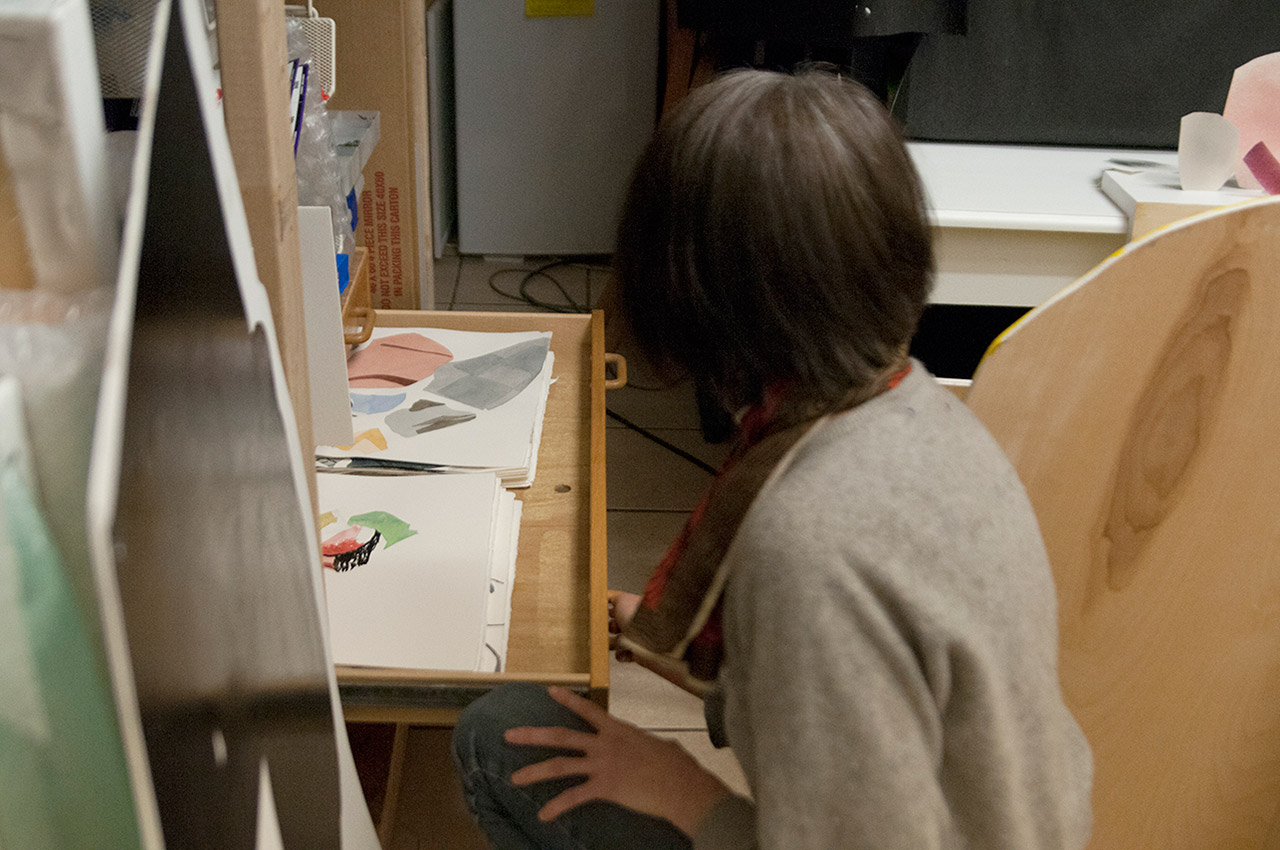Inside\Within is a constantly updating web archive devoted to physically exploring the creative spaces of Chicago's emerging and established artists.
Support for this project was provided by The Propeller Fund, a joint administrated grant from Threewalls and Gallery 400 at The University of Illinois at Chicago.

Search using the field below:
Or display posts from these tags:
3D printing 3D scanning 65 Grand 7/3 Split 8550 Ohio 96 ACRES A+D Gallery ACRE animation Art Institute of Chicago Arts Incubator Arts of Life audio blogging Brain Frame CAKE Carrie Secrist Gallery casting ceramics Chicago Artist Writers Chicago Artists Coalition Chicago Cultural Center Cleve Carney Art Gallery Clutch Gallery Cobalt Studio Coco River Fudge Street collage collection Columbia College Chicago Comfort Station comics conceptual art Contemporary Art Daily Corbett vs. Dempsey Creative Capital DCASE DePaul University design Devening Projects digital art Dock 6 Document drawing Duke University dye Elmhurst Art Museum EXPO Chicago Faber&Faber fashion fiber Field Museum film found objects GIF Graham Foundation graphic design Harold Washington College Hatch Hyde Park Art Center illustration Image File Press Imagists Important Projects ink installation International Museum of Surgical Science Iran Jane-Addams Hull House Museum jewelry Joan Flasch Artist's Book Collection Johalla Projects Julius Caesar Kavi Gupta Links Hall Lloyd Dobler LVL3 Mana Contemporary metalwork Millennium Park Minneapolis College of Art and Design Monique Meloche Museum of Contemporary Art Chicago (MCA) Museum of Contemporary Art Detroit (MOCAD) Museum of Contemporary Photography (MoCP) National Museum of Mexican Art (NMMA) National Resources Defense Council New Capital Northeastern Illinois University Northwestern University Ox-Bow painting paper mache Peanut Gallery peformance Peregrine Program performance photography PLHK poetry portraiture printmaking public art Public Collectors publications Renaissance Society risograph rituals Roman Susan Roots&Culture SAIC screen printing sculpture Sector 2337 Shane Campbell Silver Galleon Press Skowhegan Slow Smart Museum Soberscove Press social practice South of the Tracks Storefront SUB-MISSION Tan n' Loose Temporary Services Terrain Terrain Biennial text-based textile textiles The Banff Centre The Bindery Projects The Cultural Center The Franklin The Hills The Luminary The Packing Plant The Poetry Foundation The Poor Farm The School of the Art Institute of Chicago (SAIC) Threewalls Tracers Trinity College Trubble Club University of Chicago University of Illinois at Chicago (UIC) University of South Florida at Tampa Valerie Carberry Vermont Studio Center video weaving Western Exhibitions wood carving woodwork Yellow Book Yollocalli Arts Reach zinesInside\Within is produced in Chicago, IL.
Get in touch:
contactinsidewithin@gmail.com
Leslie Baum's Hydradic Appetite
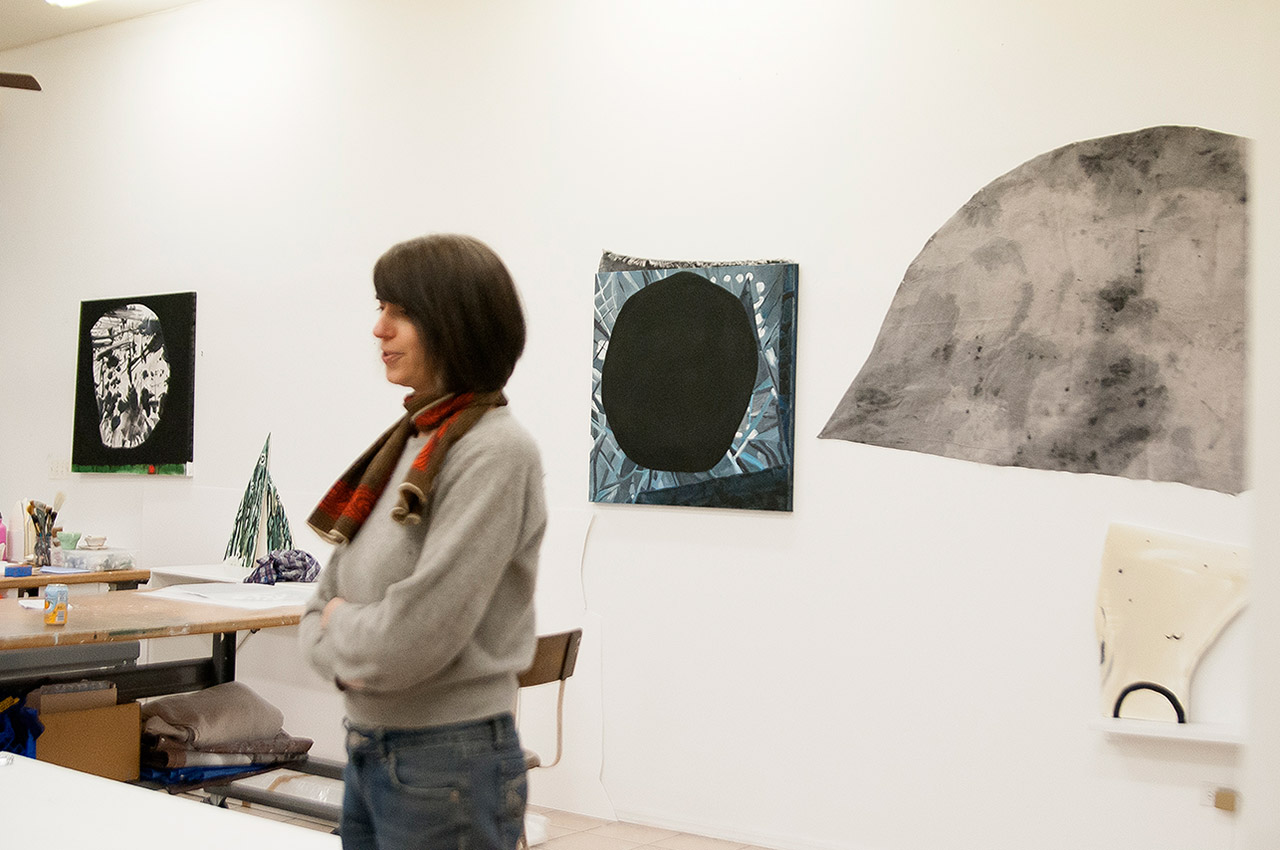
Leslie’s studio is a storefront in Logan Square, a vast white space and former bodega a 1/2 block from her home. Utilizing all surfaces including the floor, Leslie works on several pieces at once to feed the many heads of her Hydra-like practice.
I\W: How does each paint medium you use express a different voice?
LB: Spray paint is the newest, so I am a real amateur. I think being an amateur has allowed me to do things I couldn’t do in the other media that I have a lot of proficiency in. When I work in spray paint it is extremely gestural, almost like calligraphy. There is almost a shock and awe of painting with it. It almost reads photographically. I use a textured paper and it comes out in this spray, so it makes a contact that is fuzzy and with dots. When you step back it is not quite pixelated, but it almost reads more like a blurred traditional photograph. That is not something that happens with my hand and a brush. I find it also has a little more edge for whatever reason than my other handling of paint, so I like to put it in with those other things. I tend to always put some spray paint in, just to put another emotional tone in with the other work. Watercolor and gouache I have done as long as I have painted. They are also very immediate, but immediate in a different way. It is very much about the ground, about the white paper. I very rarely watercolor an entire surface. I often leave a lot of paper showing through. The integrity of the paper is really powerful, and I don’t find that a canvas has that same authority. I can paint a lot of white, and I think a lot about how to make white paint interesting and different from white exposed surface. With oil paint I think there is the most possibilities in terms of paint application.

Do you use watercolor and oil both on paper and on canvas?
I use watercolor on paper— I have never used it on canvas. I use oil on canvas. I also use wood panels and have also started using Sintra. Sintra is a brand new material to me. It is a thin plastic so it has a bit more durability and is extremely light weight. I found this material because of the Terrain project. I wanted to make a painting out of Sabina‘s house, and I had never made a painting for outdoors. I was really technically stumped for what to attach to her house. I started using it in the studio just recently. I had water damage in my studio, and all my paintings were crowded around me and I really couldn’t work on the wall. I needed something small that I could do, and I thought if I did something new I would have a loose energy and wouldn’t be so preoccupied with what I wasn’t able to be working on. I had all this scrap here from the Terrain show, and I liked how all that stuff had looked when I took it down—it had survived. I decided I would try to make oil paintings on it. I invested in a Jigsaw which I had never used before. I am not a tool person. This is my first power tool.
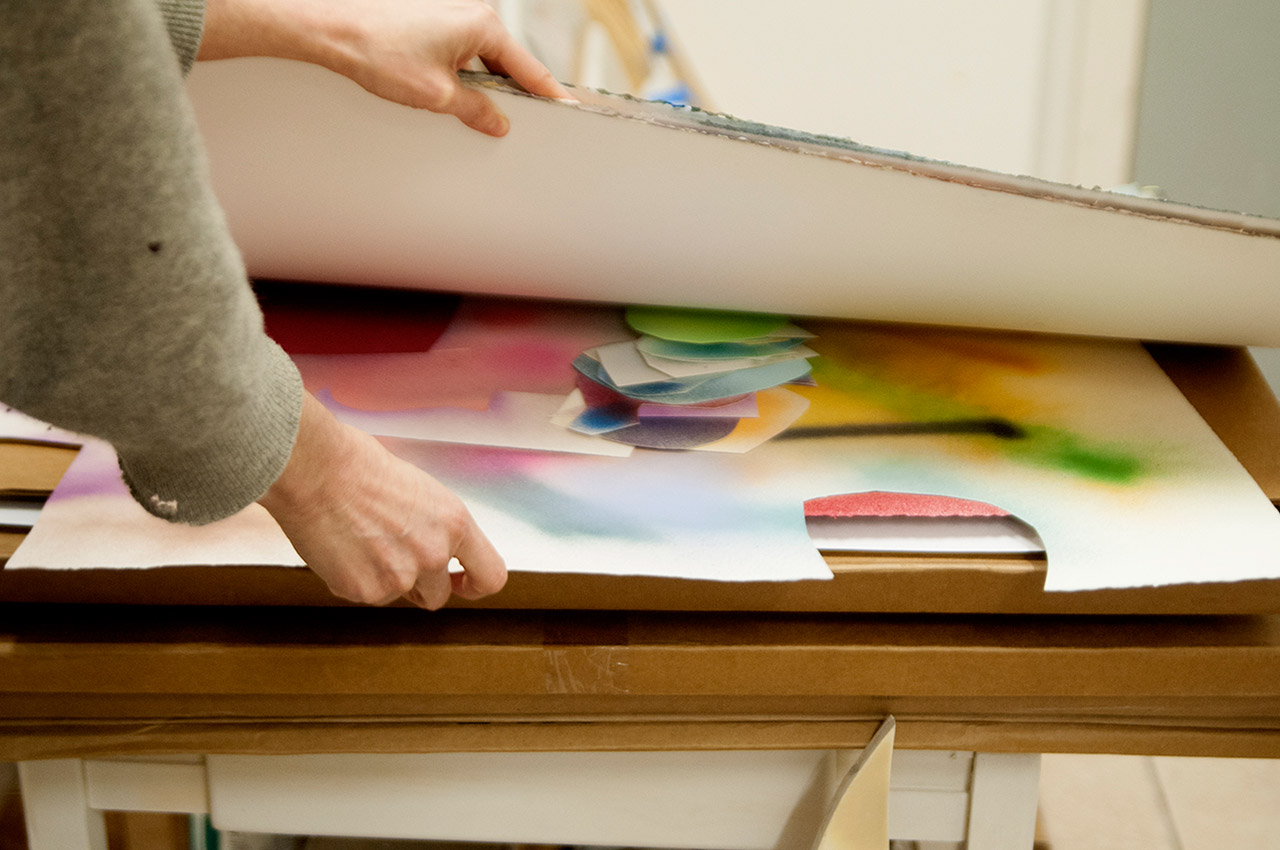

When did you move into doing more installation work?
It is fairly recent in the scheme of things, and happened in this studio. This studio has been very good to me. It happened within my first 6 months. I was making these watercolors and sometimes they didn’t work, but I would like one of them so I would cut out the ones that I liked. I had a stack of the cut-outs, and didn’t know what to do with them at the time. It was one of those classic aha moments where I was suddenly like, ‘What if they stood up?’ —like a picture frame on your desk. I started making all of these things stand up, and suddenly they were extremely interesting.
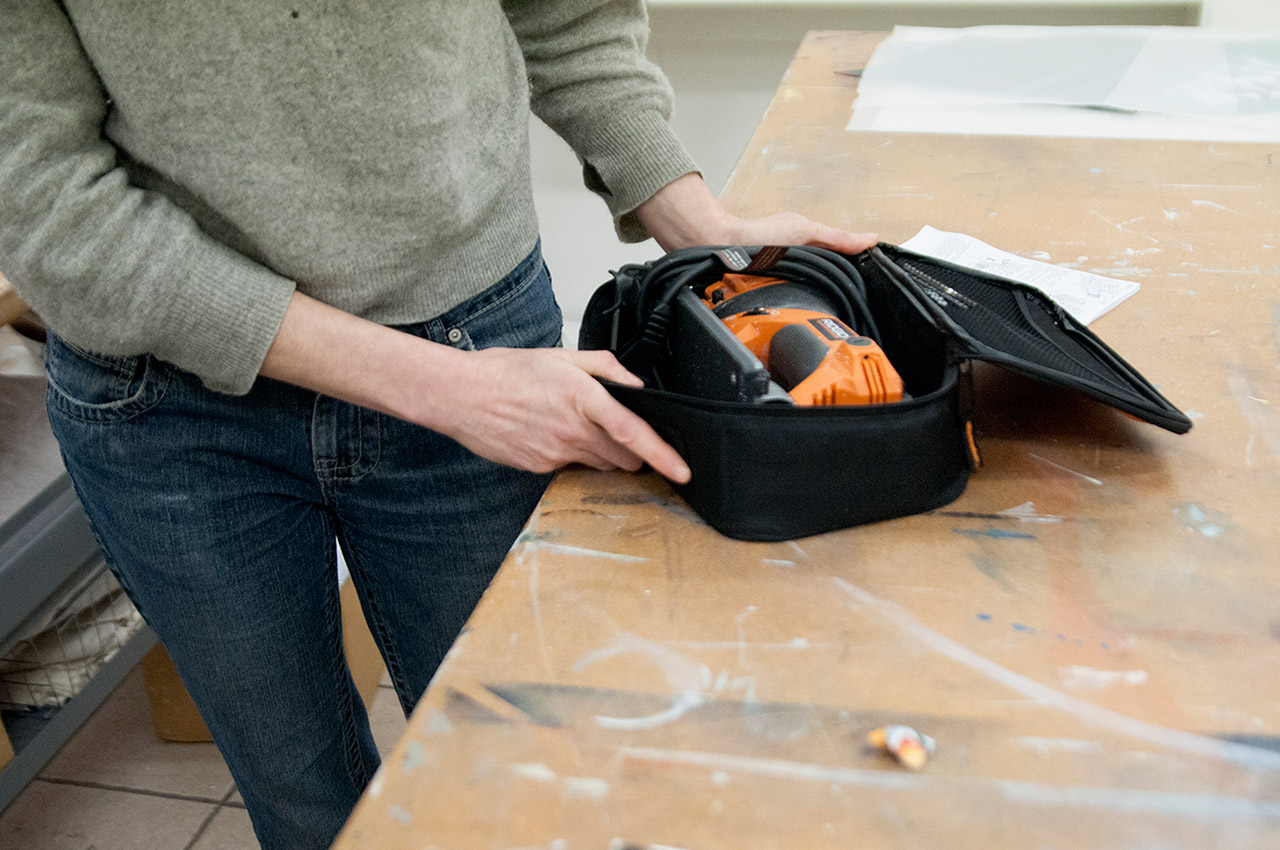
Your color themes are so vast. Do you go through different phases with colors?
Yes, I definitely go through phases for sure. I don’t think I am a very methodical person, I think I am a spaz. I will get into a groove with a palette, but it doesn’t last very long. The way that I am working right now is that I am interested in making all of these component elements and I want them all to go together. Sometimes it is just like an orgy of making them, and I am not thinking about how they are going to work. I am just producing and producing and then thinking about what I am going to do with all of them. I think about if I can make these shapes, surfaces, images and colors come together in a way that is compelling, and not just crazy. I definitely go through periods of using certain colors, but that period will be mixed in with different stuff so you can’t necessarily see it.
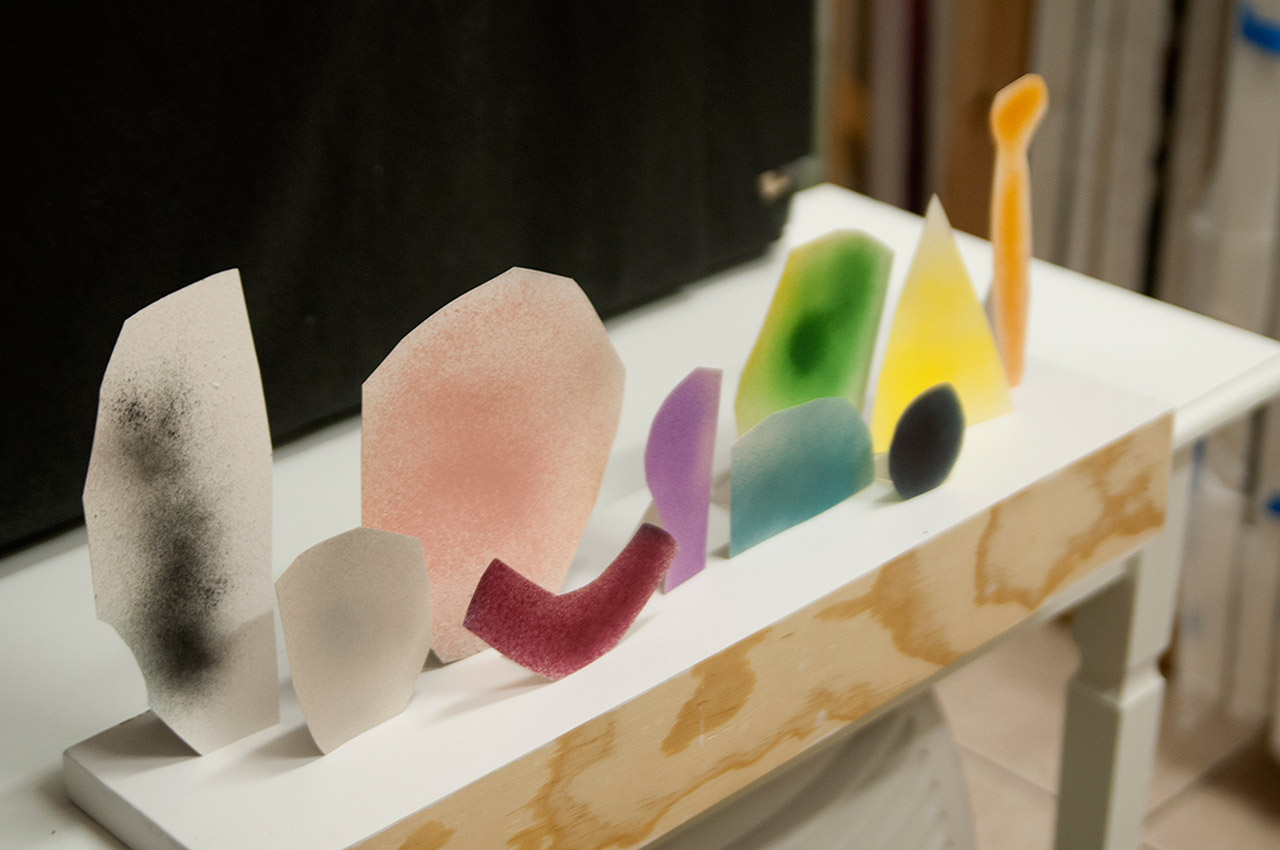
Do you typically work in a series, or are you just producing a bunch of work and then spending time narrowing it down?
Yes, it is the second one and I find that the more I work on the better. Things don’t have to be related. I can work on all of these different streams. I have been thinking about my painting a lot as a Hydra. One monster, seven heads. I feel like I am working on these floor things and these watercolor things and these more formal oil paintings, and I don’t think of them as being separate. They are the same monster, but they have different heads and different appetites.
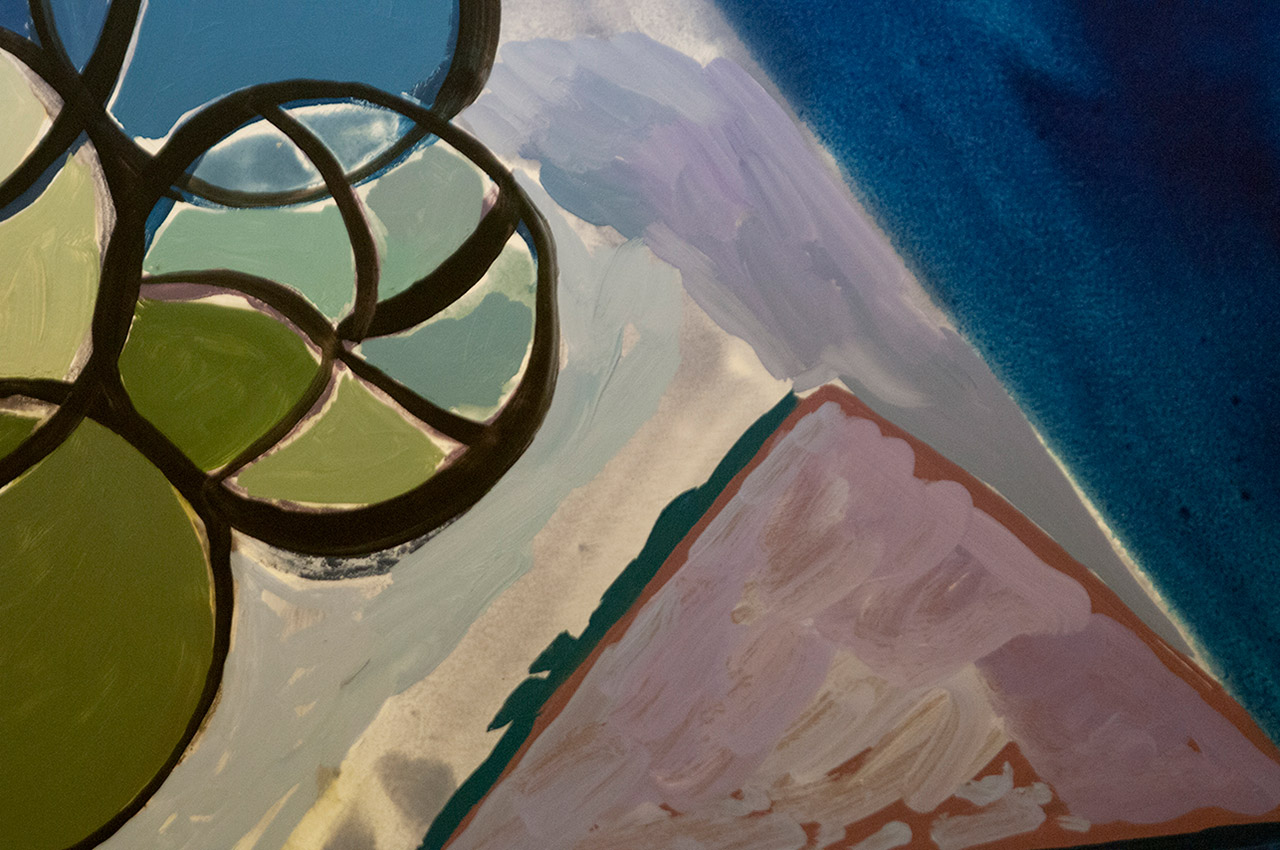
How do you think selling some of your work on Etsy blurs the line between craft and fine art?
I had to do a lot of soul searching. The fact is I have always made small works on paper, and that is work that is in the Art Institute’s permanent collection. It is the work I have sold the most of and I have 500 of them easily. They are tiny. I was thinking about it, and thinking that this is work that people really love and it is affordable and is also very appropriate for the sphere of people’s lives. You can live with a tiny 4×5 watercolor. It is not what I am doing anymore, and I don’t foresee it being what I am ever doing. I don’t want to expend energy trying to get some gallery interested in it, and there are all of these new marketplaces. Why not try to sell it because people enjoy them, and I would like to have a little more income from the work than it just sitting here. After thinking about it for like a million years and having too many conversations, I thought that I would just do it. This is the world we live in, and we don’t always have to have someone mediating between artist and audience, between artist and collector.
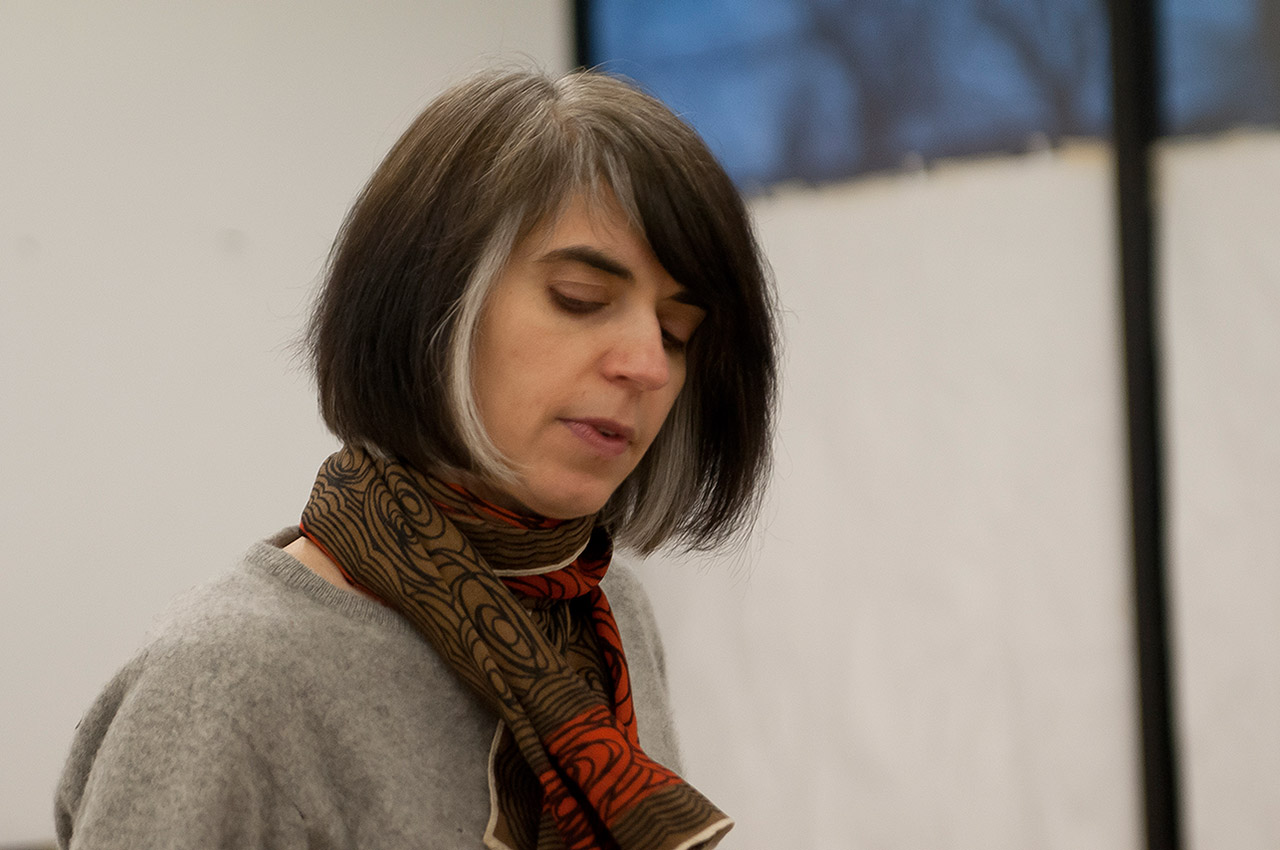
How would you decide if a piece of work is one you would or would not sell on Etsy?
I haven’t done any of the thinking beyond the watercolors. I think there is enough emotional and actual time distance between that work and what I am doing now, and I also really believe in that work. It has been sanctioned by the powers that be already so I don’t feel like it gets thrown into question. I just have so much of it. It feels very project-based. This body of work on this particular marketplace makes sense. In terms of anything else that I am doing, I don’t think that it’s a fit, but I like to think that I am an open-minded person.
